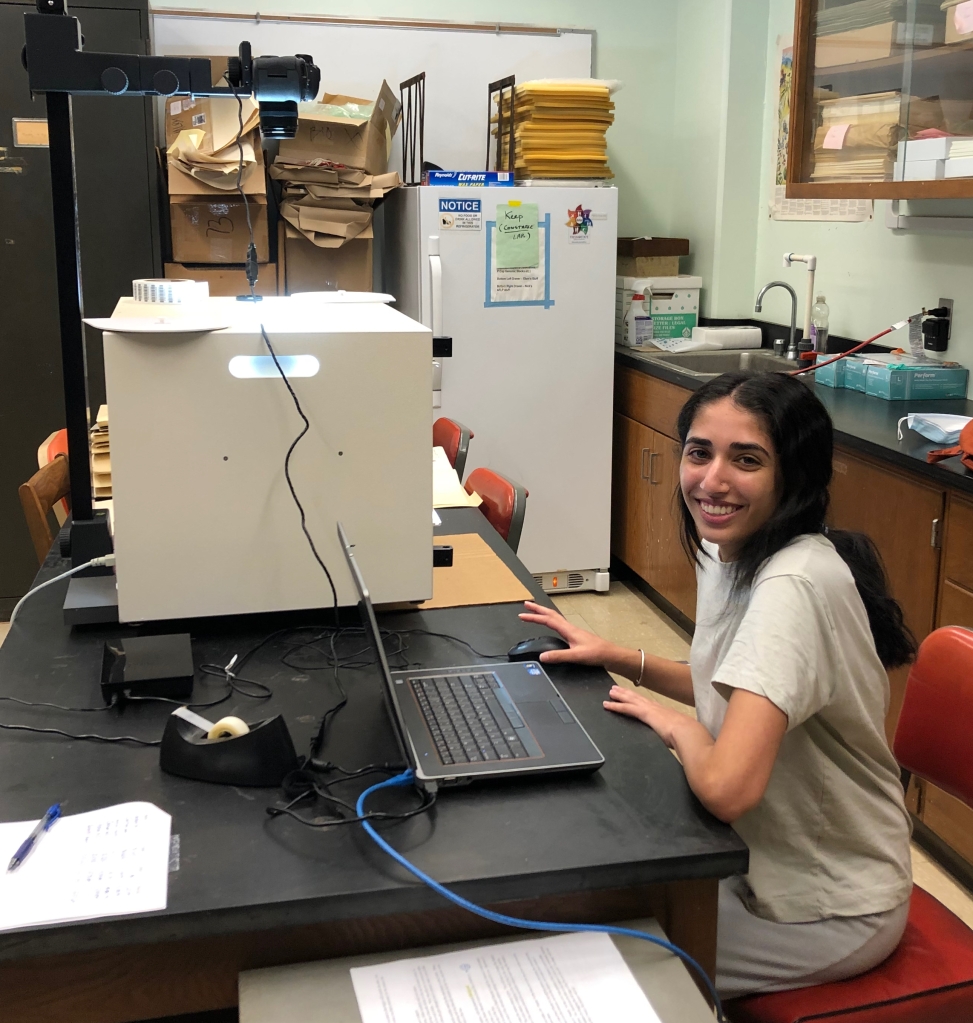I am the curator of the CSU, Fresno Herbarium (FSC), a collection of ~40,000 pressed, dried plant specimens dating from the late 19th century to the present day. It was established formally in 1925 by Dr. Charles H. Quibell, a Fresno State Biology professor. The geographical specialty of the FSC is Fresno County and parts of surrounding Inyo, Kern, Madera, Mono, and Tulare Counties: this large area includes an incredible diversity of ecosystems and habitats, including the Sierra Nevada mountains, the San Joaquin Valley, and the Mojave Desert. About nine-tenths of the accessioned collection is from California, with the remaining tenth from other states and countries. In addition, we have a huge backlog (at least 5,000 specimens) of unmounted material dating back to the 1940s. Among the projects that these specimens originate from: several of Charles H. Quibell’s 1950s expeditions to the Sierra Nevada; the 1966-1968 San Luis Project from Central Valley ecosystems destroyed by the construction of the San Luis Reservoir; and a 1990s endangerment assessment of plants of the Western Sierra Nevada.
The FSC herbarium is currently being imaged and specimen data is being digitized with funding from the NSF-funded California Phenology Thematic Collections Network. This data is constantly being uploaded online, and is available to the public through the Consortium of California 2 Herbaria Portal, along with data from 21 other botanical collections throughout the state. We also currently have a digitization “expedition” available through Notes from Nature, where citizen scientists can contribute to our knowledge of California’s flora: check it out by clicking on the link and then scrolling down to the button that says “Fresno State University (part 7)”!
Recently, we have started a new collaborative CSU STEM NET-funded initiative to build a Central California ethnobotanical database, working with local Native people from several different tribal groups. Our faculty collaborators include Dr. Brian Agbayani in Linguistics, Dr. John Pryor in Anthropology, Dr. Leece LeeOliver in American Indian Studies, and Dr. Emily Walter in Biology. Our lab’s role in this project is to provide specimen images from useful plant species for the Mukurtu Central California Ethnobotany database, and georeference (add GPS points to) our collections of these same plant species, to contribute precise information about their geographic distribution over time. The overall project goal is to provide a tribally-controlled database of linguistic, ethnobotanical, and biological information about plants important to local indigenous people, which can then be used for educational purposes.
If you would like to visit the herbarium (located on the 3rd floor of the Science building on the Fresno State campus), request a loan, or donate specimens (Plant Collection Excel Template for Specimen Submission), please contact me. Likewise, if you are interested in volunteering to work in the herbarium in any capacity (mounting, imaging, or digitization), please contact me!


